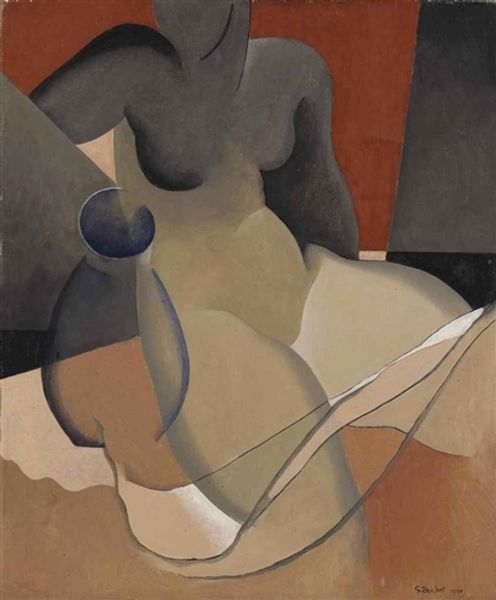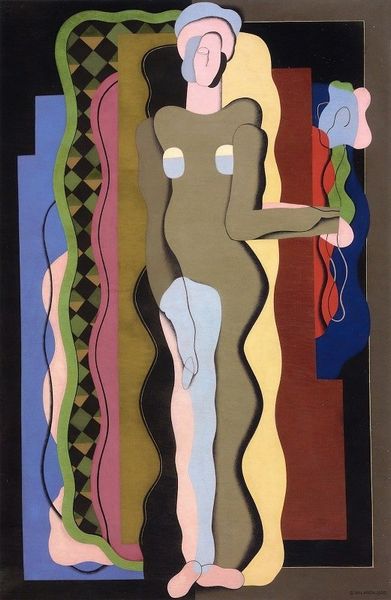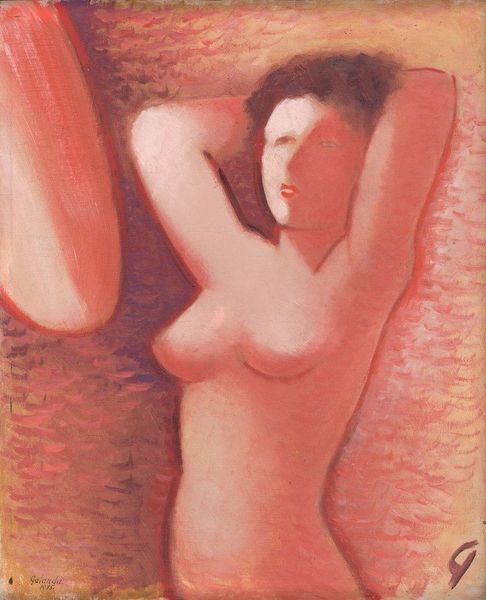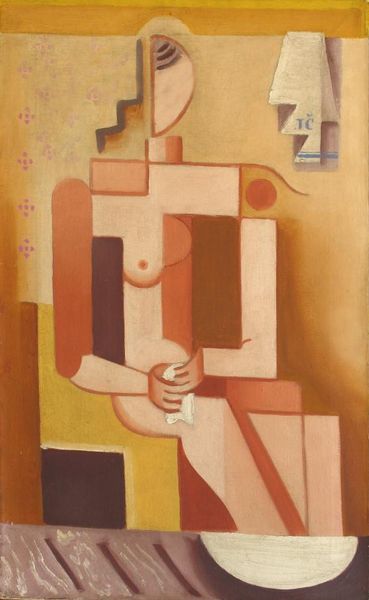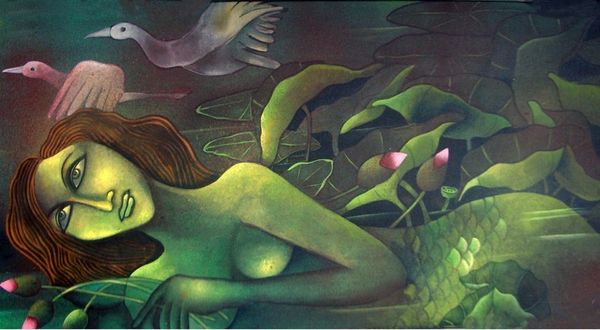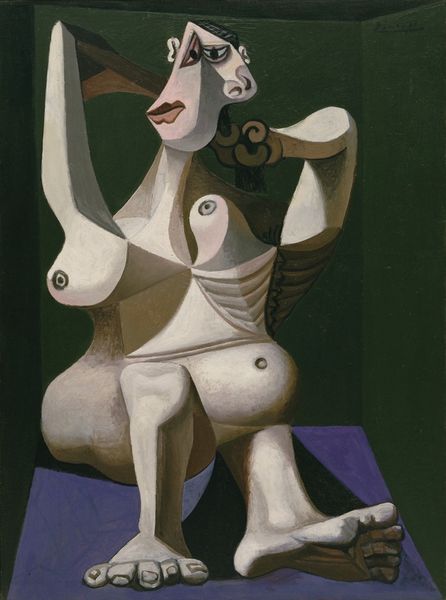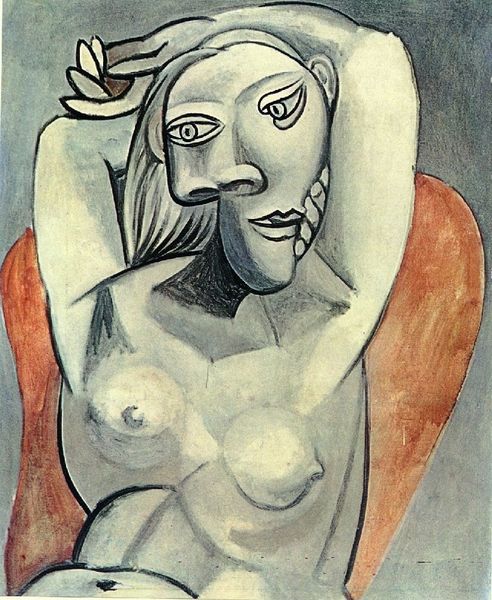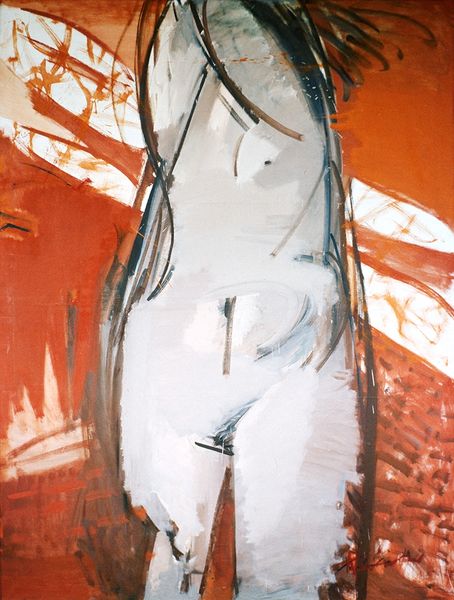
Copyright: Public domain
Editor: So this is Luigi Russolo’s "Soapdish," painted in 1929. It’s oil on canvas, and I’m immediately struck by how geometric the human form is here. It’s both figurative and abstract, quite intriguing! What's your interpretation of it? Curator: It’s fascinating how Russolo, known for his Futurist sound experiments, turns to a relatively traditional subject – the nude – but infuses it with a thoroughly modern sensibility. This work comes after Futurism’s initial explosive phase. The question I ask is this: how does the artist attempt to capture not just visual appearance, but a sense of modern life within this image? Editor: That's interesting. What aspects tell us that? Curator: The fractured planes of the body and the background, clearly drawing from Cubism, suggest a world in flux, a world seen from multiple perspectives simultaneously. Consider the period in which this work was created – post World War I, amidst rapid industrialization. Are these sharp angles and conflicting perspectives conveying an unease with modernity itself, or an embrace of its dynamism? Or maybe even both? Editor: I see what you mean. The geometric forms do make it feel kind of fragmented. I hadn't thought of that connection to the time period. Curator: It challenges the traditional idealized nude. Where classic nudes conveyed timeless beauty and stability, "Soapdish" presents a body mediated by technology, by shifting perceptions, almost as if commodified. It really begs us to consider the ways modern society changes our vision of what is beautiful. Editor: Wow, I’ve definitely learned to look at it differently! Thanks for opening my eyes to the historical context and those interesting questions! Curator: My pleasure. And thank you – it’s through discussions like these that we keep the conversation about art relevant and alive.
Comments
No comments
Be the first to comment and join the conversation on the ultimate creative platform.
